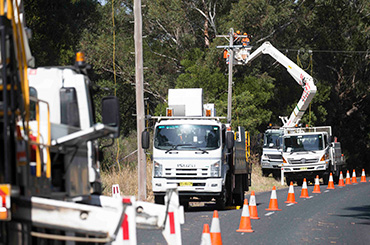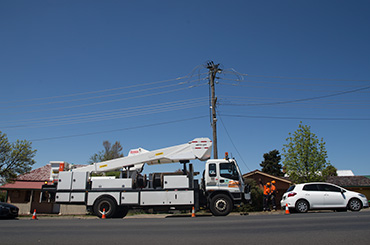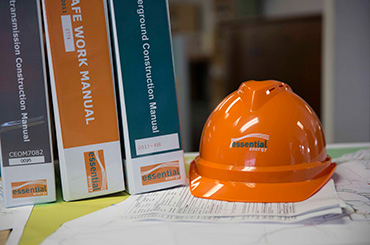An easement is a right applying to land. It gives one party rights over land owned by another party.
Electricity easements give Essential Energy the right for clear, 24-hour access to:
- operate, maintain or upgrade electrical lines
- immediately attend to damage and technical faults.
Electricity easements ensure the safety of residents living, working, and playing near powerlines. They help prevent incidents occurring that could cause serious injury or even death.
Easements may also exist on a property for other purposes, such as:
- water mains
- sewerage mains
- natural gas supply lines
- shared infrastructure such as driveways.
How does an easement affect what I can do with my property?
Easements can vary in size and width, and it is important to always keep them clear and accessible. That does not mean you are not allowed to use the space at all, though.
See our Living with easements support article for common questions about:
- How to find out if there is an easement on your property
- What you can and cannot do within an easement
- What to do if you notice an encroachment on an easement
- How to obtain permission for controlled activities within an easement.
Where are easements needed?
Easements must be in place for all new electrical infrastructure and some existing infrastructure located on:
- Privately owned land
- Crown land (State of NSW) including:
- waterways
- crown roads
- crown reserves - Some land owned by Council (operational classified land)
- Reserves, part of new subdivisions
- National Parks.
State Forests and railways also have separate requirements.
Electricity easement requirements for connection works are determined during the design information process. Creating easements is a complicated and expensive legal process. In general, when designing new connections, we recommend use of easements as a last resort. Consult with your Level 3 ASP (Accredited Service Provider), local council and surveyor if alternative options are available, for example:
- adjustment of boundary lines (e.g., creating a battle axe block)
- rerouting service lines
- switching from an overhead to underground line
How to create an easement
Creating an easement is a complicated legal process. We highly recommend you engage a professional to help you, such as a:
- Surveyor
- Conveyancer
- Solicitor
- Level 3 Accredited Service Provider
For detailed information on how to create easements, see our Creating easements support article.
Who pays for easement creation?
The connecting customer is responsible for the cost of creating easements that relate to:
- new supply connections funded by the customer under a Standard Connection Offer
- easements for services under a Basic Connection Offer
- new subdivisions, boundary adjustments or Community Title land developments.
If a new supply project involves both shared and dedicated powerlines, the cost is apportioned between the connecting customer and Essential Energy.
The total cost of an easement depends on individual circumstances. Some of the costs you may encounter when creating an easement are:
- Cost involved in establishing ownership of land
- Cost involved in negotiating with landowners
- Land valuation expenses
- Easement survey and plan preparation expenses
- Legal expenses to Applicant’s solicitor for easement negotiation, preparation, and registration
- Legal expenses to landowner’s solicitor for legal advice to landowner
- Compensation payments to landowners
- Fees to financial institutions in relation to mortgaged properties
- Registration fees
- PEXA fees
- stamp duty
- taxes.
Release of easements
If you believe an electrical easement on your land is no longer needed, you can apply for a Release of Easement. For details, see our Release of easements support article.
More information
Living with electricity easements and infrastructure fact sheet
Creating easements support article
Living with easements support article
Release of easements support article




